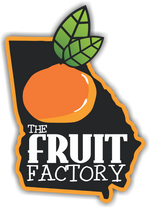Fruit Varieties

All of our fruit is hand clipped or picked. Most of the time it is cleaned and packed the same day it was picked. We have some varieties that were born and raised on the farm that look promising for the future.
Fruit will have a little bit of green because we don't color our fruit.
Satsumas: commercially grown in this area in the late 1800s & early 1900s, stretching from the Georgia coastline in Savannah to Mobile, Alabama.This area is making a come back and we are in one of the best of them.
- Xie Shan: an early ripening variety that ripens in October
- Owari: the most popular variety and produces a consistent crop of small to medium-sized fruit.
- Brown Select: produces the largest free and fruit size and ripens in early November.
Mandarins
- Kishu: seedless and one of the most delicious varieties of mandarins. This mandarin is smaller than a golf ball, but is east to peel and is sweet, juicy and fragrant.
- Shiranui - "The Big Bubba": seedless and sweet. This variety is many times sweeter that other citrus fruits because of its low acid content.
Tangerines
- Dancy: one of the oldest tangerine varieties. The shape of the fruit is flattened and often somewhat pear-shaped due to the development of a neck at the stem end. The peel is bright orange, smooth and glossy.
Oranges
- Moro Blood Orange: the most colorful of the blood oranges, with a deep red flesh and a rind with a bright red blush. The flavor is stronger and the aroma is more intense than a normal orange. This fruit has a distinct, sweet flavor that some say has a hint of raspberry.
- Navel Orange: east to peel, sweet and seedless. Navel Oranges are sweeter and have a low-acid level with a typical orange flavor.
Kumquat
- Meiwa: round in shape, like large marbles, and have a golden-color peel when ripe. The flesh has a flavor much sweeter than most kumquats.
- Nagami: the most common variety of Kumquat. When ripe, they have a bright orange color. They are known for their sweet-tart flavor.
Clementine: Part of the mandarin orange family, these are the most popular because of their thin skin and low acidity and make a great snack.
Minneola Tangelo: This hybrid fruit, a cross between a tangerine and pomelo, has a distinct bell-shape with a knob on the blossom end. Minneola are not too acidic and have a red-orange skin.The thin skin, sweetness and juiciness makes these perfect for snacking.
Meyer Lemons: Smaller and more round than regular lemons and are less acidic and have a sweeter taste. The skin is thin and has a deep yellow color with a slight orange tint when ripe.
Key Lime: Slightly larger than a walnut, Key Limes have an oval shape with a thin yellowish skin and usually have splotchy brown spots. They are fragrant and very juicy.
Pears: Most often consumed fresh or as juice, canned or dried and sometimes used in jams and jellies. Pears ripen at room temperature
Apples: Most commonly used for cooking, making juice or cider, or eaten raw. Ripe apples have skin colors including red, yellow or green.
Guava: Guava have a round or oval shape and have a rough, bitter tasting skin or it can be soft and sweet.
Loquat: A cross between a mango and an apricot, Loquat are golden orange and ripen in clusters. They are the sweetest when soft and orange and the flavor is a mixture of peach, citrus and mild mango.
Grapefruit: This hybrid between bitter-skinned pomelo and the sweet orange has flesh colors that can be yellow, light orange, pink or red depending on the orange cross. Grapefruits have a bitterness and are better eaten with a grapefruit spoon or they can be juiced.
Mulberries: native red Mulberry trees have been enjoyed by North Americans for centuries.
Blueberries: Great for snacks, jams, jellies, baked goods, wines or added to your favorite cereal.
Grapes: Fresh grapes are a great snack and can be used for jams, jellies, juice, wine, grape seed oil and extract or made into raisins.
Muscadines: Make great fruit, wine, jams and jellies.The vines make great wreaths and baskets and provides shade in the summer.
Pomegranates: Once you get through the tough skin, the juicy, ruby-red seeds are full of juice. They are great on their own and also add a punch of flavor to salads or mixed drinks.
